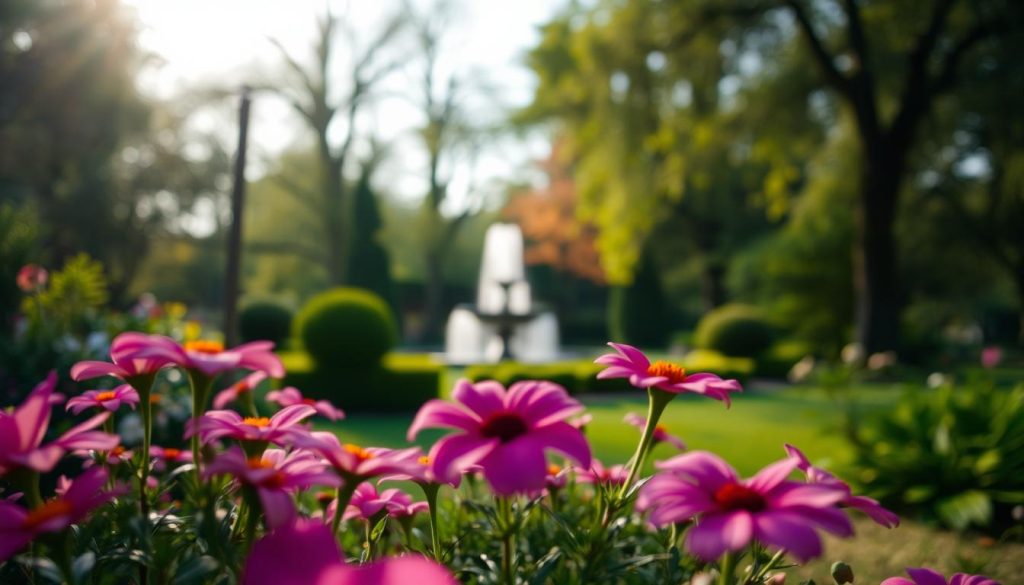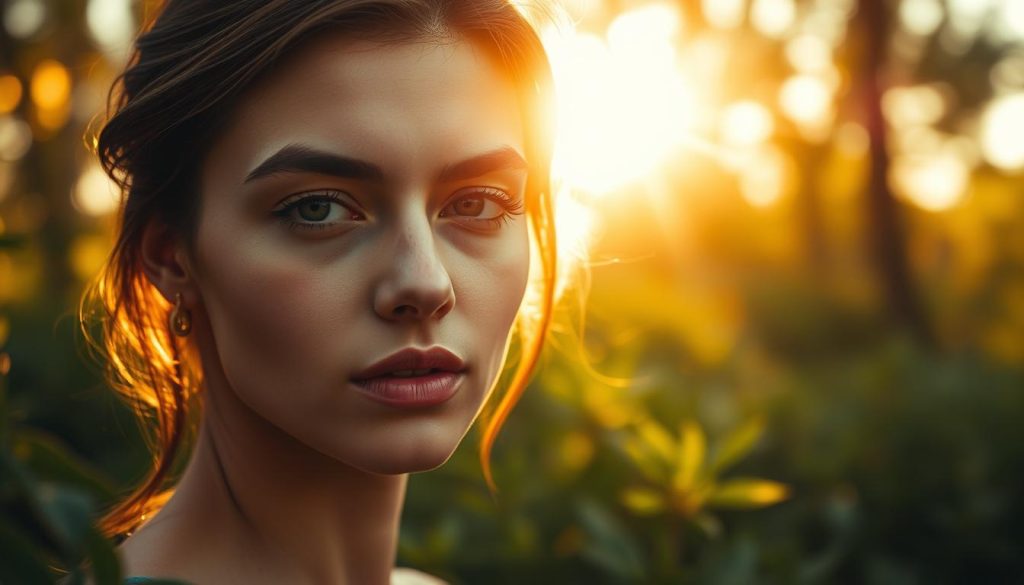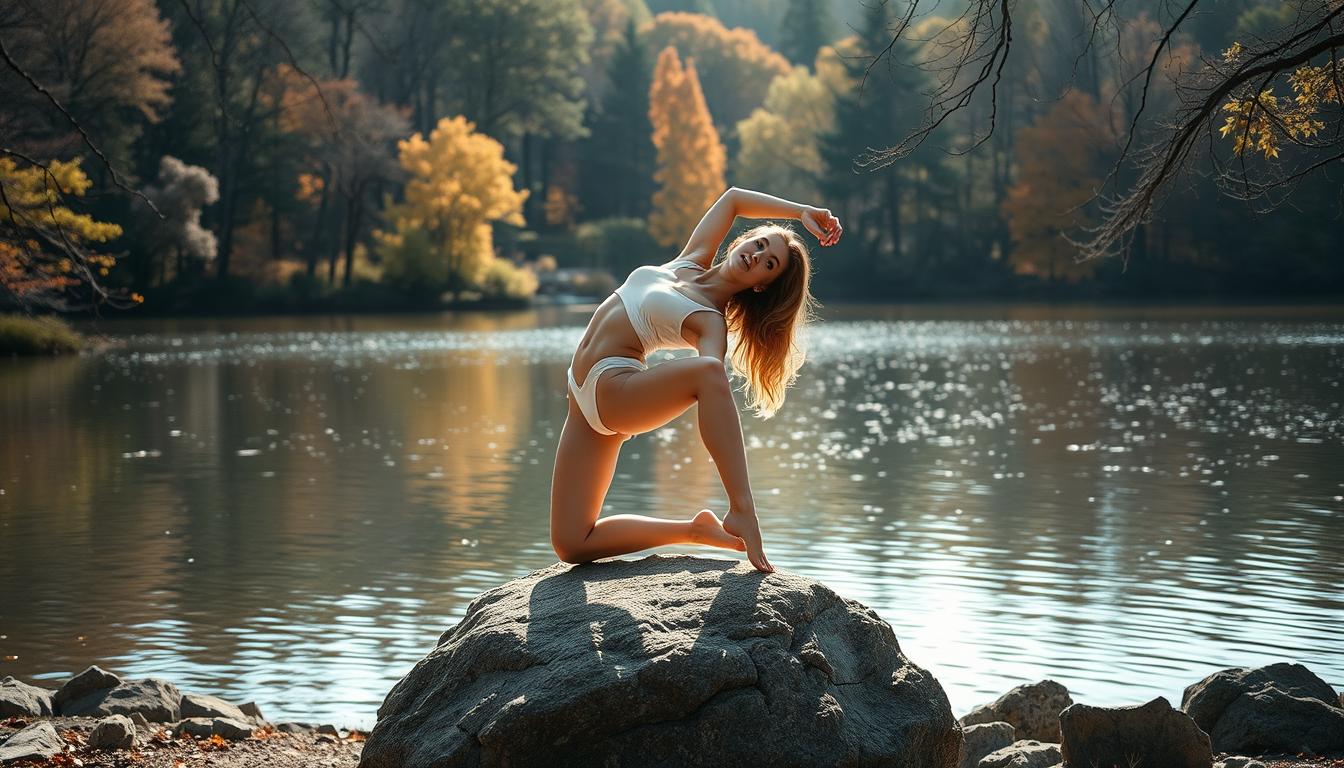I’m excited to share my knowledge on posing and framing. These skills are key to making amazing portraits and stunning images. You’ll learn how to improve your photography and engage your viewers with body language, negative space, and creative angles.
If you’re new to portrait photography or looking to get better, this article is for you. You’ll discover how to use body language and negative space to make your photos stand out. These techniques will turn your images into art.
Ready to boost your photography skills? Let’s explore the world of posing and framing together. We’ll make your photos even better.
Posing and Framing: The Art of Storytelling
Posing and framing are key in photography. They help tell a story and stir emotions. We’ll explore body language and how to use it. You’ll also learn to add depth and dimension to your portraits.
Understanding Body Language
Body language is powerful in portrait photography. It shows emotions and personality. Try different poses to capture your subject’s mood.
Creating Depth and Dimension
Depth and dimension make portraits pop. Use leading lines and framing to add depth. Try different angles and focal lengths for the best shot.
| Technique | Description | Example |
|---|---|---|
| Leading Lines | Use lines to guide the viewer’s eye to the subject. | |
| Framing | Use elements in front to frame the subject. | |
| Selective Focus | Blur the background to highlight the subject. |  |
Mastering posing and framing takes practice. Experiment to find your style. Use these tips to create stunning portraits.
Lighting Techniques to Enhance Your Portraits

Lighting is key in photography. It can make or break your portraits. As a pro, I’ve tried many lighting techniques. I’m excited to share what I’ve learned with you.
Using natural light is a favorite of mine. Place your subject near a bright window or outside in soft sunlight. This creates a natural glow that makes your subject look great. Try different light angles to find the best look.
Artificial lighting can also change your game. Portrait lighting like softboxes or ring lights gives your photos a studio feel. By placing these lights right, you can shape shadows and highlights. This adds depth and dimension to your subject’s face.
I also love creative lighting. This means using unique light sources, like colored gels or lamps, to add an artistic touch. The world of lighting for photography is vast. Try new setups to see how they change your photos.
Learning about lighting is a journey, but it’s worth it. Knowing how to use light can make your portraits stunning and professional. They will surely grab your audience’s attention.
The Power of Negative Space

In photography, “negative space” is often ignored, but it’s very powerful. It’s the empty areas around the main subject. This can make your photos look amazing and balanced.
Balancing Elements for Visual Impact
Finding the right balance between your subject and the empty space is an art. By carefully placing things in your frame, you can make your photo feel harmonious. This draws the viewer’s eye to where you want it.
Try different ways of arranging your subject and the empty space. This will help you find the best balance.
- Leverage negative space to create a sense of breathing room and emphasize your subject.
- Use negative space to lead the viewer’s eye through the frame, guiding their attention to the focal point.
- Harness negative space to create a sense of simplicity and elegance in your images.
Learning about negative space can make your photos more powerful. Use this element well, and your photos will look more sophisticated and appealing.
Framing Your Subjects: Creative Angles
Capturing great portraits is more than just centering your subject. Creative camera angles and unique views add depth and interest. They make your photos stand out.
Try shooting from low down, looking up at your subject. This makes them look strong and powerful. On the other hand, shooting from high up can make them seem smaller or more playful.
Another trick is to place your camera off-center. Use the rule of thirds for a more exciting photo. This makes your subject seem more dynamic and interesting.
- Experiment with low-angle shots to create a commanding presence
- Use high-angle perspectives to evoke a sense of vulnerability or playfulness
- Employ the rule of thirds to position your subject off-center for a more dynamic composition
Mastering creative framing means being open to new ideas. Try different angles and views. You’ll find new ways to make your subjects shine and grab your audience’s attention.
Developing Your Artistic Eye
Mastering photography is more than just knowing how to use a camera. You need to grow your artistic eye and think creatively. We’ll show you how to improve your visual skills and find your own style.
To start, break free from old ways of thinking. Challenge your preconceptions about photos and try new things. Be curious and see the world in a new way. Look for details, light, and stories that are hidden.
Do visual exercises often to get better at noticing things. Walk around and look for cool compositions, odd angles, and fresh views. Carry a sketchbook or camera to capture these moments. The more you do this, the better you’ll get.
It’s also key to trust your instincts and be true to yourself. Try different styles and see what feels right. You’ll find a style that shows off your artistic photography and creative thinking.
The path to a better artistic eye is always moving. Face challenges, celebrate wins, and enjoy the ride. By growing your visual awareness and creative thinking, you’ll open up new possibilities in your photos.
Putting It All Together: Posing and Framing in Action
We’ve reached the end of our journey. I’m excited to share examples of posing and framing in action. These examples will show you how to create stunning photos.
We’ll look at different scenarios, from capturing candid moments to setting up planned shots. You’ll see how body language, depth, and negative space can make your photos tell a story.
Whether you’re experienced or just starting, these photography tips and posing and framing examples will help you improve. Get ready to see the amazing results of using posing and framing techniques.

